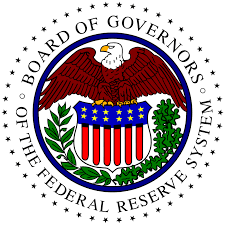 On May 24, 2018, EGRRCPA amended provisions in the Dodd-Frank Wall Street Reform and Consumer Protection Act (Dodd-Frank Act) as well as other statutes administered by the Board of Governors of the Federal Reserve System (Board). The amendments made by EGRRCPA provide for additional tailoring of various provisions of Federal banking laws while maintaining the authority of the Federal banking agencies to ensure the safety and soundness of depository institutions and their holding companies and to apply enhanced prudential standards to address financial stability.
On May 24, 2018, EGRRCPA amended provisions in the Dodd-Frank Wall Street Reform and Consumer Protection Act (Dodd-Frank Act) as well as other statutes administered by the Board of Governors of the Federal Reserve System (Board). The amendments made by EGRRCPA provide for additional tailoring of various provisions of Federal banking laws while maintaining the authority of the Federal banking agencies to ensure the safety and soundness of depository institutions and their holding companies and to apply enhanced prudential standards to address financial stability.
This statement provides information on regulations and associated reporting requirements that the Board administers and that EGRRCPA immediately affected. The Board will take the positions described below in the interim until the Board amends its regulations to incorporate these changes, as necessary.
Assessments – Pursuant to section 11(s) of the Federal Reserve Act, as added by section 318 of the Dodd-Frank Act, the Board collects assessments from bank holding companies and savings and loan holding companies with $50 billion or more in total consolidated assets to cover the cost of their supervision. EGRRCPA raises the minimum asset threshold for assessing bank holding companies and savings and loan holding companies to $100 billion. To implement EGRRCPA, the Board will collect assessments from all assessed companies for the year 2017, but will not collect assessments from bank holding companies and savings and loan holding companies with total consolidated assets of less than $100 billion for the year 2018 and going forward.
High volatility commercial real estate (HVCRE) – EGRRCPA provides that the Federal banking agencies may only require a depository institution to assign a heightened risk weight to an HVCRE exposure if such exposure is an “HVCRE ADC Loan,” as defined in section 214 of EGRRCPA. Accordingly, as discussed in the Interagency Statement, a state member bank may risk-weight at 150 percent those commercial real estate exposures it believes meet the statutory definition of an HVCRE ADC Loan. When reporting HVCRE exposures on Schedule RC-R, Part II of the Consolidated Reports of Condition and Income (Call Report), a state member bank may use available information to reasonably estimate and report HVCRE ADC Loans. A state member bank may refine these estimates in good faith as it obtains additional information but will not be required to amend regulatory reports previously filed in good faith as these estimates are adjusted. A state member bank also may continue to report and risk-weight HVCRE exposures in a manner consistent with the current instructions to the Call Report.
Furthermore, to avoid the regulatory burden associated with different definitions for HVCRE within a single organization, the Board will not take action to require a bank holding company, savings and loan holding company, or intermediate holding company of a foreign bank to estimate and report HVCRE on Schedule HC-R, Part II of the FR Y-9C consistent with the existing regulatory requirements and reporting form instructions, provided that the holding company reports HVCRE in a manner consistent with its subsidiary depository institution(s) and EGRRCPA. A holding company may also continue to report and risk-weight HVCRE exposures in a manner consistent with the current instructions to Schedule HC-R, Part II of the FR Y-9C.
Enhanced Prudential Standards – In response to the financial crisis, the Board strengthened capital, liquidity, risk management, and other prudential standards for banking organizations. The Board’s enhanced prudential standards also implement section 165 of the Dodd-Frank Act, which required the Board to establish stricter prudential standards for bank holding companies with total consolidated assets of $50 billion or more.
EGRRCPA increases the $50 billion asset threshold in section 165 in two stages.
Immediately on the date of enactment, bank holding companies with total consolidated assets of
less than $100 billion were no longer subject to section 165.
Eighteen months after the date of enactment, the threshold is raised to $250 billion. EGRRCPA also provides that the Board may apply any enhanced prudential standard to bank holding companies between $100 billion and $250 billion in total consolidated assets.
Consistent with the text and purpose of EGRRCPA, the Board will not take action to require bank holding companies with less than $100 billion in total consolidated assets to comply with certain existing regulatory requirements. These requirements include the enhanced prudential standards in the Board’s Regulation YY, the liquidity coverage ratio requirements in the Board’s Regulation WW, and the capital planning requirements in the Board’s Regulation Y.
Banking organizations with total consolidated assets of less than $100 billion typically do not have complex structures, are not dependent on short-term wholesale funding, and have little, if any, foreign exposures. Instead, these banking organizations typically engage in traditional commercial banking activities and rely on relatively stable sources of funding. In particular, domestic depository institution holding companies with total consolidated assets between $50 billion and $100 billion generally more closely resemble smaller, regional banking organizations than banking organizations with total consolidated assets of greater than $100 billion. In addition, domestic depository institution holding companies in this size range more closely resemble their smaller peers in measures of complexity, such as on-balance sheet trading assets and off-balance sheet derivative exposures. In addition, foreign banks with total global consolidated assets of $50 billion to $100 billion typically have a small U.S. presence, and are generally less important to U.S. financial stability than domestic banking organizations of the same total asset size
Section 165 also directed the establishment of certain prudential standards for bank holding companies and other financial companies with total consolidated assets of $10 billion or more, such as annual company-run stress test requirements. Consistent with the text and purpose of EGRRCPA, the Board is extending the date for Board-regulated financial companies with total consolidated assets between $10 billion and $100 billion to comply with the company-run stress testing requirements until November 25, 2019 (at which time the statutory exemption will be in effect).
Compliance with other requirements – There are a number of reporting, disclosure, and recordkeeping requirements associated with regulations affected by EGRRCPA. Consistent with EGRRCPA, the Board will not take action to require bank holding companies, state member banks, and savings and loan holding companies with less than $100 billion in total consolidated assets to comply with certain reporting, disclosure, and recordkeeping requirements. In addition, a number of changes made by EGRRCPA require implementation through rulemaking. The Board expects to propose rules that would implement these provisions at a later date.
Ongoing supervisory expectations – The Board is taking the actions outlined in this statement consistent with the safety and soundness of Board-regulated institutions and the purpose and direction of EGRRCPA. In this context, and consistent with the banking laws as amended by EGRRCPA, the Board will continue to supervise and regulate financial institutions within its jurisdiction to help ensure the safety and soundness of individual institutions and stability of the broader banking system. Thus, for example, while the Board will not take action to require company-run stress testing by depository institutions with assets of less than $100 billion, the capital planning and risk management practices of these institutions would continue to be reviewed through the regular supervisory process.
Attachment
Regulatory and reporting requirements related to prudential standards
Consistent with EGRRCPA, and until the adoption of amendments to certain regulations promulgated by the Board of Governors of the Federal Reserve System (Board), the Board will not take action to require:
- Bank holding companies with total consolidated assets of less than $50 billion to comply with the following requirements:- Regulation YY, subpart B (company-run stress test);
– For those bank holding companies that are publicly traded, Regulation YY,
subpart C (risk committee); and
– Reporting and recordkeeping requirements associated with Regulation YY, subparts B and C, including FFIEC 016: Annual Dodd-Frank Act Company-Run Stress Test Report for Depository Institutions and Holding Companies with $10- $50 Billion in Total Consolidated Assets (OMB Number 7100-0356). - Bank holding companies with total consolidated assets greater than or equal to:- Regulation Y, section 225.8 (capital planning);
– Regulation QQ (resolution planning);
– Regulation WW, subparts G and J (modified liquidity coverage ratio, liquidityrelated disclosures);
– Regulation YY, subpart D, except for risk-management and risk committee requirements under section 252.33;
– Regulation YY, subpart E (supervisory stress test);
– Regulation YY, subpart F (company-run stress test);
– Regulation YY, subpart U (debt-to-equity limits); and
– Reporting and recordkeeping requirements associated with section 225.8 of Regulation Y; Regulation QQ; Regulation WW, subparts G and J; and Regulation YY, subparts D, E, F, and U, including the following:
— FR 2052a: Complex Institution Liquidity Monitoring Report (OMB Number 7100-0361);
— o FR Y-14A; Y-14M; Y-14Q: Capital Assessments and Stress Testing (OMB Number 7100-0341); and
— o FR Y-15: Banking Organization Systemic Risk Report (OMB Number 7100- 0352). - Savings and loan holding companies with less than $100 billion in total consolidated assets that are not substantially engaged in commercial or insurance activities to comply with the following requirements:- Regulation WW, subparts G and J (modified liquidity coverage ratio, liquidityrelated
disclosures); and
– Reporting and recordkeeping requirements associated with Regulation WW,
subparts G and J, including the following:
— FR Y-15: Banking Organization Systemic Risk Report (OMB Number 7100-
0352); and
— FR 2052a: Complex Institution Liquidity Monitoring Report (OMB Number
7100-0361).
In addition, the Board is delaying the compliance date for all regulatory requirements related to company-run stress testing for savings and loan holding companies and state member banks with total consolidated assets of less than $100 billion until November 25, 2019 (at which time the statutory exemption will be in effect), pursuant to section 252.3(b) of the Board’s Regulation YY. During the extended compliance period, the Board will not take action to require savings and loan holding companies and state member banks to comply with reporting and recordkeeping requirements associated with Regulation YY, subpart B (company-run stress test), including FFIEC 016: Annual Dodd-Frank Act Company-Run Stress Test Report for Depository Institutions and Holding Companies with $10-$50 Billion in Total Consolidated Assets (OMB Number 7100-0356).
Undefined terms used in this attachment are used consistently with, or have the same meanings as set forth in, the Board’s Regulation Q, Regulation Y, Regulation QQ, Regulation WW, and Regulation YY, as applicable.
Questions regarding this attachment or the Board’s implementation of EGRRCPA should be directed to the following staff in the Board’s Legal Division: Laurie Schaffer, Associate General Counsel, (202) 452-2272, Benjamin W. McDonough, Assistant General Counsel, (202) 452- 2036, Mary Watkins, Attorney, (202) 452-3722, or Alyssa O’Connor, Attorney, (202) 452-3886. In addition, questions may be sent via the Board’s public website.












